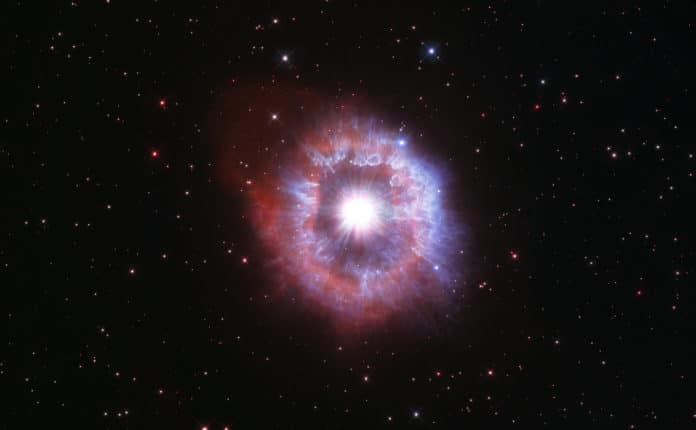While celebrating its 31st anniversary of the launching, NASA‘s Hubble Space Telescope captured a monster star on the edge of destruction. Dubbed as AG Carinae, this celebrity star is one of the brightest stars seen in our galaxy. It is waging a tug-of-war between gravity and radiation to avoid self-destruction.
The star AG Carinae is surrounded by a glowing and expanding halo of gas and dust. This expansion shell of gas and dust is approximately five light-years wide.
The massive structure was built around 10,000 years ago with one or more giant eruptions. The star’s outer layers were sunk into space, and the amount of expelled material is about ten times the mass of our Sun.
These outbursts are the common existence of a rare variety of stars called a luminous blue variable. These types of stars are among the most massive and brightest stars known. They live for two or three million years, compared to an around 10-billion-year lifetime of our Sun. AG Carinae is a few million years old and lives 20,000 light-years away inside our Milky Way galaxy.
AG Carinae is estimated to be up to 70 times more massive than our Sun and shines with the blinding brilliance of one million suns. Like many other luminous blue variables, AG Carinae remains unstable. It has experienced lesser outbursts that have not been as powerful as those that created the present nebula.
Kerstin Weis, a luminous blue variable expert at Ruhr University in Bochum, Germany, said, “I like studying these kinds of stars because I am fascinated by their instability. They are doing something weird.”
As a super-hot star, AG Carinae continues pouring out searing radiation and mighty stellar wind, traveling at up to 670,000 miles per hour. Over time, the hot wind catches up with the cooler expelled material, plows into it, and pushes it farther away from the star. This “snowplow” effect has cleared a cavity around the star.
The red material is glowing hydrogen gas laced with nitrogen gas. Blue specifies filamentary structures shaped like tadpoles and lopsided bubbles. These structures are dust clumps illuminated by the star’s reflected light.
The tadpole-shaped features, most prominent at the left and bottom, are denser dust clumps that the stellar wind has sculpted. Hubble’s sharp vision reveals these delicate-looking structures in great detail.
Hubble captured the image in visible and ultraviolet light.
This April, Hubble celebrated its 31st anniversary. Launched on April 24, 1990, NASA’s Hubble Space Telescope has made more than 1.5 million observations of about 48,000 celestial objects.
